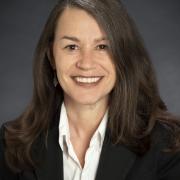Cool through community — a climate action moonshot
Can systems change come from the bottom up? These neighbors believe it can.

"Can climate change be made simple enough to solve?"
With this recent question, GreenBiz Executive Editor Joel Makower bottom-lined the mission that has compelled many careers, including my own. "What would a set of solutions look like that could serve as an onramp to the uncommitted? Could these solutions be made to seem not just important, but cool?"
Lauren Yarmuth, IDEO’s circular economy lead, added texture to this conundrum from the stage of the recent Circularity 19 conference. Teeing up the need for a circle-friendly culture if we are to thrive, Yarmuth cautioned, "Unless our cultural fabric is intact, we may have a really hard time having this shift take hold and scale in the way we desperately need it to, because there is nothing to hold it in place."
To Yarmuth’s observation — I couldn’t agree more. And to Makower’s question — my colleagues and I hope so. That is why a solution set for which I have the privilege to serve as technology platform director is presumptively called "Cool Block."
Cool Block invites people to draw down carbon while building up their resiliency, social fabric and quality of life. In other words: becoming cool through community.
Cool Block’s mission is to change the game on climate one block at a time. It is designed to seize the opportunity for a scalable climate intervention based on the fact that 70 percent of the planet’s carbon is emitted in cities, and the majority of that is from households. If you can empower neighbors to reduce their carbon footprint and scale it, you have a powerful vehicle for activating a systems-level solution for addressing climate change.
"The Cool Block program helps people learn and practice carbon reduction, water stewardship, disaster resiliency, livability and empowering others," explains its creator, David Gershon, CEO of the nonprofit Empowerment Institute. It’s based on a value that is "so simple and so profound — people want to connect with people who live in the same place."Cool Block invites people to draw down carbon while building up their resiliency, social fabric and quality of life.
A neighborhood Cool Block begins with an individual accepting the invitation to become a leader on the block where they live. Everything after that is an interconnected action-based exercise that takes place simultaneously in their household, with others on their block, and in partnership with their neighborhood or city. Action is supported by coaching circles. Importantly, it is also supported by local policy, product and resource providers gathered by a community campaign leader.
Beyond individualism
"For decades now we've been building these norms around individualism, like we have to do it all ourselves," observes Yarmuth. "It becomes so abstract, it's hard for us to feel like what we do matters, like we have agency, like we are part of this complex system." Which is why when an individual steps forward to create a small team to take specific, direct and collaborative action on the ground, it can be so powerful.
"I really liked that there were step-by-step, clearly stated action recipes for the program," says San Francisco Cool Block participant Shannon Wells. "That helped a lot in figuring out what to do, what would make the most difference, set priorities and do it." Such specific guidance can create impressive results, and pilots in three cities — Palo Alto, San Francisco and Los Angeles — set a high bar for what the program could deliver. On average, 25 actions were taken in each reporting household, selected from more than 100 options.
"With climate change, simple solutions for individuals tend to be, almost by definition, small in nature, necessary but insufficient to address the magnitude of the problem," aptly observes Makower. But small can be mighty. Cool Blocks have achieved a 25 percent reduction in average household footprints and has shown to be replicable and scalable across a number of diverse cities.
Community as secret sauce
"Cool Block has changed things in our neighborhood," reports Palo Alto block leader Lorrie Castellano. "Not only have we lowered our carbon footprints and prepared our block for any emergency, but we actually talk to each other, wave to each other and get together regularly even after the program is over."
Wells agrees. "We helped rewrite the social blueprint of our neighborhood. We showed how to be a community which makes it easier for others to do the same."
As Cool Block prepares to scale, several new pilots are teed to help identify what results are possible in various campaign configurations — neighborhood-focused, youth-led, university-driven, even rurally shaped. As on-the-ground experience gathers in diverse communities, a scalable blueprint is beginning to become visible. And with it, our climate emergency begins, step-by-step, to look solvable.
From cool to carbon-neutral
The true game of our century is one of systems interdependence, as GreenBiz VERGE Executive Director Shana Rappaport reminded us this year on the 4th of July.
Makower observes, "The bigger, systemic solutions — decarbonizing the electric grid, buildings and cars; tropical forest restoration; family planning; expanding carbon markets worldwide; ending fossil fuel subsidies, among others — are downright knotty and expensive things to do."
Indeed. Carbon reduction is necessary, but only system-wide carbon neutrality is sustainable. This requires creating synergistic breakthroughs across technology, finance, policy and community engagement.
Activating a climate solution system

This bottom-up change from the demand side (consumers and voters) activates top-down change from the supply side (technology and policy adoption) and vice versa. A virtuous cycle ensues.
Best of all, as each sector makes changes and we see each other make them, we can feel like partners executing on a shared vision. That will, indeed, be very cool.
Through Cool Block actions, citizens can change their behaviors and effectively engage in partnership with other public and private players in the uptake of systemic change. Whether choosing clean energy and transportation options, building micro-scale green infrastructure, participating in carbon markets or advocating at City Hall, they are building demand for innovative policy, product and practice.
A moonshot through civic-public-private partnership
The first Cool Block pilots were structured as a three-way partnership among Cool Block’s Empowerment Institute, the three pilot cities and Los Angeles-based cosmetics company Josie Maran Cosmetics. The goal of this partnership was to leverage and create synergy among each entity’s core assets: empowerment expertise; community credibility; and financial resources.
It was an opportunity for CEO and business visionary Josie Maran to further what she calls corporate social engagement. "I believe the Cool Block program is revolutionary for people, cities and the planet and has huge potential in addressing climate change," says Maran. "I am very excited to have my company play a part in bringing this program to scale, first in California and then around the world."
Creating these civic-public-private partnerships has prepared us for our moonshot: a Cool California campaign to create carbon-neutral cities by 2030. And as we decode the formula for a carbon-neutral city, we are paving the way for a scalable climate solution for our planet — our ultimate moonshot.





